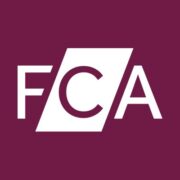Principles, practices and persistence: the Consumer Duty deadline arrives
After years under the microscope, the Consumer Duty deadline is finally upon the financial industry, coming into force on 31 July 2023.

The FCA’s Consumer Duty comes into force on 31 July 2023
The Consumer Duty is a new form of regulation launched by the UK’s Financial Conduct Authority (FCA) and aims to raise the bar when it comes to ensuring consumer protections in financial services.
As the crowning glory of the FCA’s ongoing endeavour to improve customer outcomes, the duty essentially requires firms to place their customers’ needs front and centre of everything they do.
As stated by the financial watchdog, the regulation comprises of “a new Consumer Principle that requires firms to act to deliver good outcomes for retail customers”.
The duty concerns four key areas: products and services; price and value; customer understanding; and customer support. In this, it dictates that firms must now consider the specific needs of the customer from the very first interaction.
Not only will firms have to deliver such outcomes, but they must also need to prove that they understand how they were created and evidence the path to their fruition.
And it isn’t just firms that are regulated by the FCA that will be subject to the duty, as the call also extends to consumer organisations, trade bodies, policy makers, industry commentators and think tanks, among others.
Indeed, the arrival of the regulation marks a complete overhaul of the industry’s complex relationship with the consumer. For the FCA, it isn’t what firms say, it’s what they can prove.
Despite the FCA announcing the arrival of the duty over a year prior to the July 2023 deadline, its implementation and the industry’s preparations at large have been anything but smooth sailing.
Failing to prepare
To gauge the preparedness of firms for its arrival, the FCA recently commissioned a survey of 1,230 firms that are readying themselves for its arrival, publishing its findings last month.
In very much the same light as its January review of the Consumer Duty, the FCA’s updated findings raised major concerns on the rate of implementation. Only 64% of firms said they would be fully complaint with the regulation post the July deadline, while a further 23% said they would comply with “most of the requirements” by this time, admitting that more work still needs to be done.
Any good relationship must have good communication, and these figures appear to correlate with the findings of technology company Quadient, which were published around the same time.
Quadient’s findings indicate that customers, the end recipients of the Consumer Duty’s force for change, are still struggling to comprehend what exactly their banks are trying to tell them.
According to its research, only 8% of UK banking customers could correctly identify what they would be charged when presented with a standardised letter on changes to overdraft charges.
When quizzed on the reason for this, Andrew Stevens, principal, banking and financial services at Quadient, told FinTech Futures that inefficient communication channels remain one of the biggest barriers to implementation.
“If you’re not communicating on the right channel at the right time with fully personalised information, then you can’t expect to meet the customer’s needs,” Stevens explains. He adds that banks are now starting to discover “big problems hidden behind the scenes when it comes to a horribly complicated communication landscape that now needs to be simplified” with the advent of the Consumer Duty.

Alison Donnelly, director at fscom. Image source: LinkedIn
Also working on the ground to resolve such implementation issues is fscom, one of the UK’s leading governance, risk and compliance consultancies. Speaking to the firm’s director, Alison Donnelly paints a detailed picture of the “three Cs” companies continue to grapple with as the Consumer Duty deadline approaches.
“The first is capacity,” she tells FinTech Futures. “Companies in the start-up/scale-up category don’t have a lot of spare capacity. They’ve got many other competing priorities to fulfil their regulatory obligations, never mind make money and do business.”
“There’s also an issue of cost,” she continues. “There’s a cost of figuring out what has to happen. And in that, there’s a whole heap of market research and analysis that needs to be done in order to evidence that the Consumer Duty’s outcomes are being met. And that’s an ongoing cost that’s going to be incurred in the business.”
“The third C is for clarity. Every firm will think to themselves ‘the closer we get to the deadline, the more information the FCA is going to put out and other firms will have done the hard thinking’, so it’s a bit self-fulfilling.”
“But this is an evolving base,” Donnelly adds. “I’m not sure that the FCA totally knew what was going to happen when it first published its rules and guidelines. I don’t think it does fully now. But as time goes on, we get a clearer picture of impact and expectations. But right now, I think that’s where firms struggle the most.”
Consumer outcomes and clarity
A quick flick through the Consumer Duty’s agenda, and it’s clear to see the central theme of “good customer outcomes”, but what does this actually mean?
More than ever, the specific needs and demands of the customer are evolving, and no two customers are ever the same. With this, a blanket approach to delivering the same good customer outcome quickly becomes redundant, as firms must now adhere each unique interaction to the Consumer Duty on a case-by-case basis.
Picking up on Donnelly’s latter C, clarity, this appears to be a recurring issue for those trying to understand the full scope and scale of the regulation.
The founder of core banking engine SaaScada, Steve Round, describes “instinctive banking” as the backbone of achieving a good customer outcome.
“That isn’t just about technology. It’s about having a different culture within the bank as well. You need an adaptive workforce. If you’re going to bring in new technology and new platforms to enable the data to deliver to customers, you need a workforce that adopts the new skills, collaborates and is aligned around a common purpose which is the customer, which at the moment, is not the case.
“I also think that what comes out of it, to be brutally honest, is where banks will have broken down internal silos, embraced external partnerships, even potentially with their competitors, shared data, intellectual property skills, and therefore there will be a seamless user experience that benefits the customer. That’s what I think this leads to if delivered properly.”
A measure for utopia
While it’s one thing to provide customers with this outcome, as the Consumer Duty emphasises, it’s another to manage, measure and maintain the experience.
The ability of firms to prove this capability will, until further notice, remain integral to how successfully they comply with the regulation.
Despite its strengths, the Consumer Duty remains, for all intents and purposes, a principle. It isn’t black and white, and it doesn’t have an end.
“How do you measure your adoption of a principle?” questions Dean Standing, chief customer officer (CCO) for Sagacity, the London-based data insights consultancy.
“As you would in delivering any principle-based strategy, define what utopia looks like and where you want to get to. That has to look like a set of products that are customer-bespoke and based on the customer search situations. Communications must be clear and reflect those products and you must identify individuals that, in a hierarchical or priority base, you are actively looking to work towards.

The Consumer Duty regulation “requires firms to act to deliver good outcomes for retail customers”
“I think that the best way that I would think about that is as a snapshot of where you are today versus that utopia, and then breaking down the various work streams around data quality, data capture and the prioritisation of products and communications to make sure they’re clear and working towards that.”
The industry continues, quite rightly, to promote a strong relationship with the capabilities and benefits of emerging technologies. It is this relationship that many experts in the field view as integral to delivering the Consumer Duty’s desired outcomes.
The software company Intelligent Voice has been reviewing how the effective use of technology can mitigate the challenges posed by the Consumer Duty, and more specifically, the challenges it presents to communication.
Nigel Cannings, the company’s CTO and co-founder, says “assessing vulnerability and understanding is probably going to be one of the key and defining challenges of the Consumer Duty”.
“The regulations do not require firms to tailor every communication to each individual, but there is an overriding duty to show that all communications have been tested to make sure they are delivering good customer outcomes,” Cannings comments.
“There is an important exception where it will mean that there is a duty to assess each consumer individually, and this is the most complex to deal with. Modern sales enablement tools are almost by definition designed to exploit psychology to persuade customers to close. The Consumer Duty in effect bans that approach.”
According to Cannings, technology can come to the rescue in this situation, “by using a range of linguistic and vocalic markers to see if the person they are interacting with really does understand the decision they are making”.
“Linguistic patterns can help detect whether a customer is engaged in the decision making, or whether they are in effect trying to put themselves at arm’s length to the process. Recent advances in Large Language Model technology (popularised by ChatGPT) can also be used via specialist training to help the agent ask more probing questions and do that in a systematic way that aligns with the duties set out in PS22/9.”
He insists that technology is not a substitute for proper staff training, however, “it can be used to help reinforce and explain decision making, and help the firm comply with its monitoring obligations”.
A consumer-first future
The FCA’s Consumer Duty is arguably the embodiment of a wider growing industry agenda to do right by the customer. It marks a significant turning point, reinforced by the statute of regulation, that will revolutionise finance’s force for change.
The watchdog is no stranger to clamping down on bad actors. This year alone, it has handed out no less that £35 million in fines, punishing dubious and inefficient practices that bring nothing but detriment to the consumer.
If anything is clear, it’s that the initiative is here to stay. But while it promotes its own longevity, it’s expected that the criteria outlined in its current agenda won’t be its first or last evolution.
“I think what will be interesting is what the FCA does from here,” adds Donnelly. “Where’s its focus for the future? You can ask firms to do things, but unless you ask them to show that they’ve done it, nobody can ever really be certain that it’s been fully done and to the FCA’s standard.”
“What would be particularly interesting is to know what the FCA’s priorities are and who will it be looking at first. There’s been some big talk about scrutiny and expectations, but will the watchdog match up to that?”
The FCA has sought to transform the industry’s relationship with the customer, with a regulation over a year in the making. While some are ready to champion its initiatives, others question the Consumer Duty’s viability in practice.
Now only time will tell whether the watchdog is truly able to follow through.












































Coincidentally, I received a letter from a credit card provider this morning saying that “as a responsible lender [..] we are increasing your interest rate”. I have never paid interest or been late paying this provider so how is this “responsible”? Responsible to whom? The shareholders?
Having reviewed my account, it looks as though they have decided that I’m a bad bet, but they’d like to rinse me a bit more than before in the unlikely event that my payment behaviour changes. “Good customer outcome”? Poor management and poor communication.